About Santa Marianita
A fisherman’s village, a kitesurf spot,
a wonderful beach,
whales close to shore, great wifi
Santa Marianita Beach
Santa Marianita is still an undiscovered pearl at the Ecuadorian coast. An ideal place for any nomad seeking authenticity in his travels. From our experience, travelers having lived some months in this small fishing village, turn sad when their visa runs out and time to leave approaches.. But why? Here’s 10 reasons Santa Marianita steals the heart of many.

1
KiteSurf the Pacific Waves
Whether you’re a beginner or have traveled the whole world seeking for wind, Santa Marianita is an amazing spot.
No people on the long sandy beach -plenty of space for making mistakes while learning, or going loco enjoying. Warm water, no wetsuit needed.
May to December, almost every day a stable thermal wind is blowing around 15 – 22 knots cross onshore. You can rent at Punta La Barca or rent/take classes in the kitesurfing schools further up the beach.
For the biggest honour of kiting with Humpback whales, be there between june and september
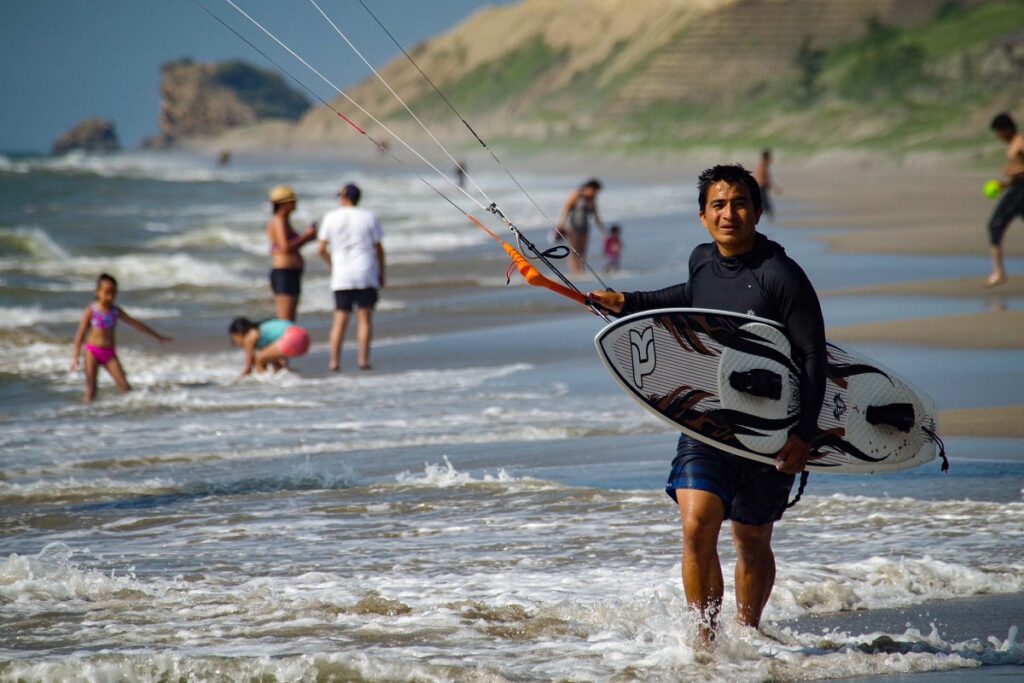
2
Live with the Wales
Between June and September, humpback whales migrate along the Pacific coast of South America to have their newborn.
In Santa Marianita, they come extremely close to shore: from Punta La Barca’s hill you easily see several whales a day jumping out of the water.
Getting closer is possible with stand-up-paddle, kiting, and boat tours from Manta or Puerto Lopez. Both scary and amazing, living day in day out with these giants you’ll treasure forever.
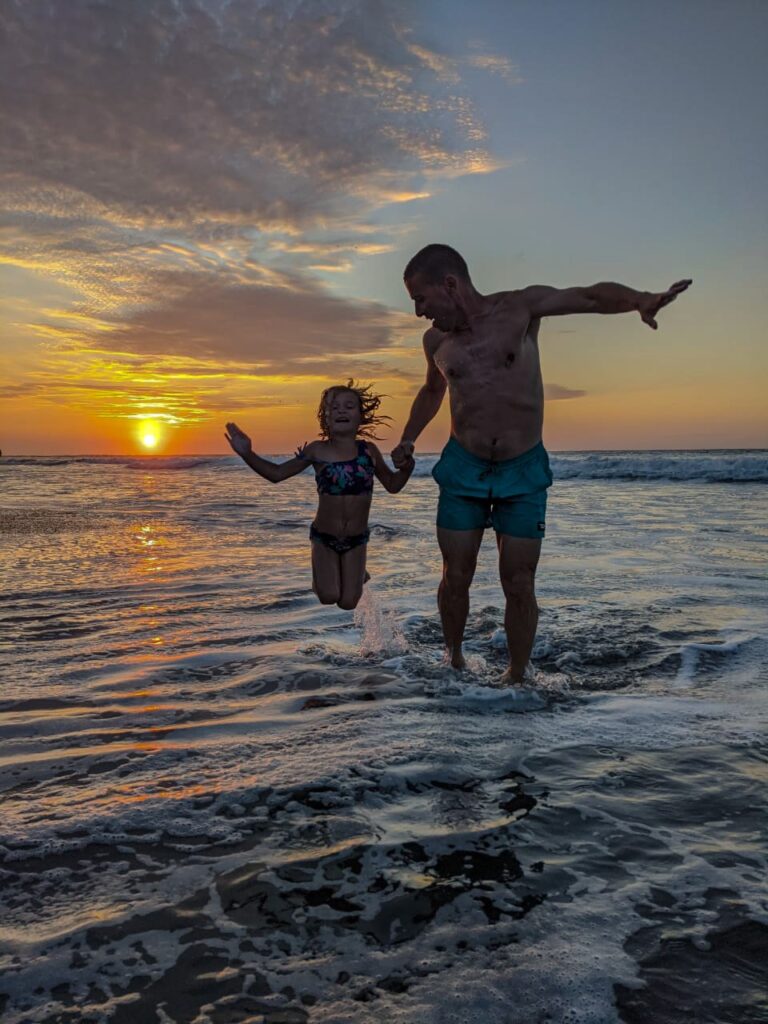
3
Surfing the Ecuadorian Cost
Surfer nomads getting their board ready at Punta La Barca.
Waves roll in along the entire coast, creating a route of wonderful surf. Around Santa Marianita, the best surf spots are the beaches on both sides: La Tiñosa, San Mateo, and San Lorenzo, all reachable by foot or public transport.
The beach down at Punta La Barca in Santa Marianita has nice practice waves for your daily water-time. Wave season in Santa Marianita is the opposite of the windy season, raising end of December and lowering in April.
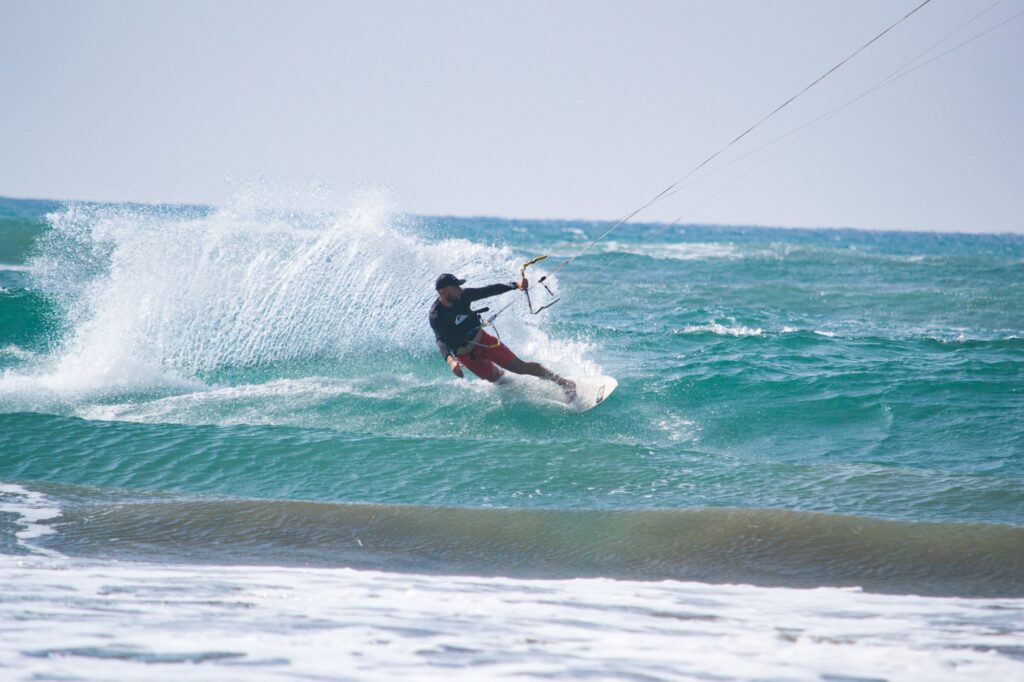
4
Long desserted sandy beaches, perfect warm sea weather
The beach in Santa Marianita is 7 km long, wide and sandy. ‘Playa bonita’, the northern part, has some basic bars, restaurants, hotels and the kite schools.
The southern part is ‘playa punta la barca’, a more deserted piece of beach.
From there, at low tide, you can hike the ‘ruta de las playas desiertas’, a 4-hour-route from beach to beach passing rocky boulder-points.
The hike ends in San Lorenzo, known for its amazing cliffs falling into the Pacific.
The sea has nice waves to play with, while at low tide she is calm enough for even young kids to go in. At the end of playa punta la barca, there’s a swimmable piece where waves barely come in. The seawater is warm, with temperatures around 24 degrees.
No wetsuits needed -though most locals go swimming with a T-shirt on, for protection against the strong sun, and sometimes chilly winds.
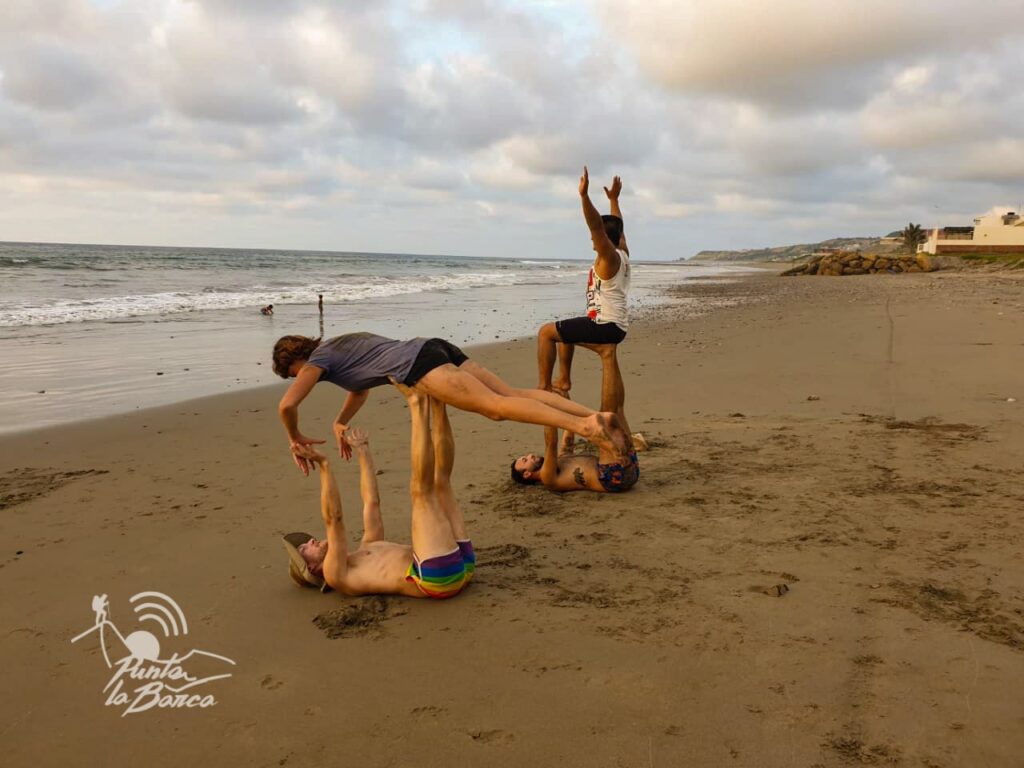
5
A paradisal climate (no rain, no mosquitos, no cold, no severe hotness)
The ecuadorian coast has typically a wet and a dry season, and Santa Marianita lies in a microclimate following these seasons to the extreme. Between may and december, for 8 months, not a single drop of rain falls in Santa Marianita.
At the same time, the sunny weather generates the afternoon-blowing wind that creates a nice living temperature and good kitesurf conditions.
Mosquitos and other animals that need watery circonstances don’t survive these dry months.
January to april, rainy season comes due to the weakening of the Humboldt current (known as the phenomenon of “El Niño”, as it usually start around christmas). For Santa Marianita this means mostly some rain at night, with in the whole season only about 5 days of heavy rain.
Old river beds float till noon, dry earth turns into mud and transforms the seemingly desert ground at rapid pace into tropical forest -an incredible yearly transformation.
From may the forest dries of again, to dy out en vanish till next year.
The rainy season comes together with warmer sea temperatures, good surf conditions with big waves coming from a northern swell, and the most wonderful sunsets.
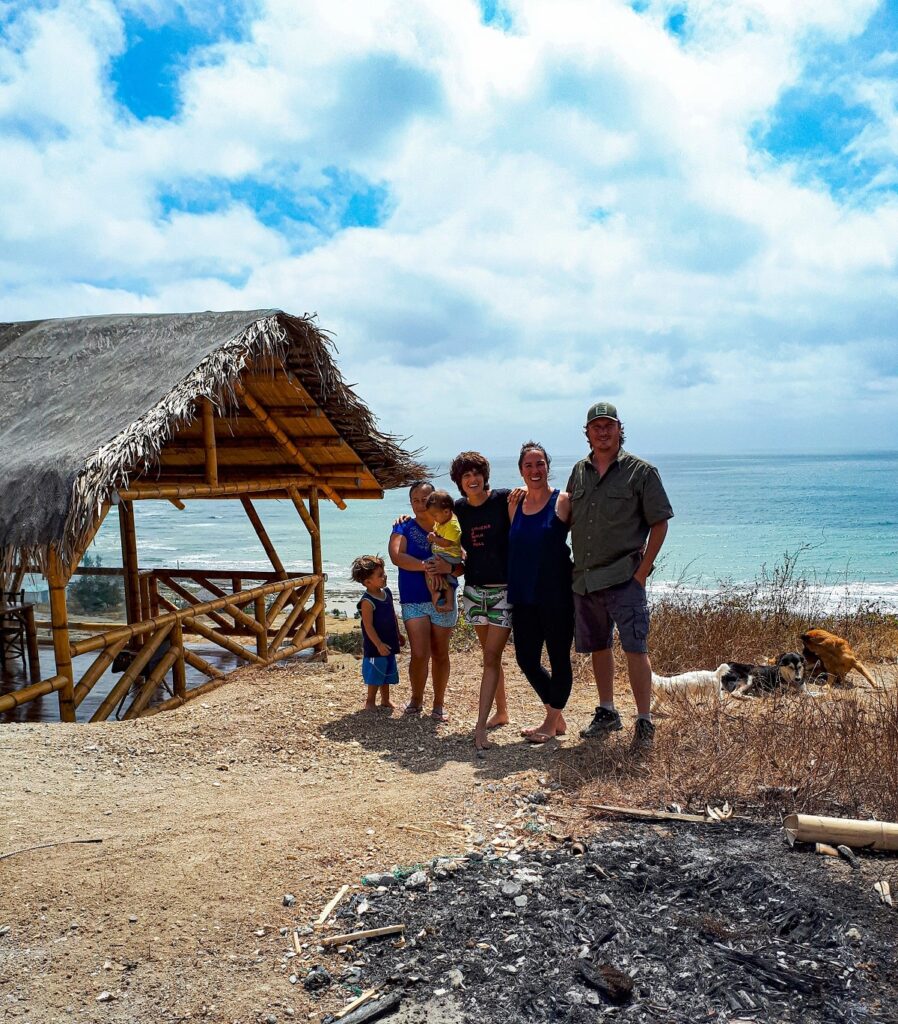
6
Simple local Life, Honest Fishermans
The small tourism in Santa Marianita keeps the culture of the fishing village very real. 90% Of locals are actually fishermen still -not selling tours or cleaning hotels, as in many more touristic places.
Get to know them by living their traditions, joining Ana catching pulpo between the rocks, experiencing a local baile, or simply go with Juan to play football.
In the village, shopping and eating out is like going back to grandfathers’ time. You will not find any big supermarkets or fast-food chains. Families offer food and all basic products in their own house, creating direct personal contact with the locals when you shop for pasta, rice or ice cream.
Fresh fruits and vegetables, from watermelon to avocados and platanos, are delivered by the farmers themselves on pickup trucks.Converted tricimotos go with their bread and yoghurt door to door.
All villagers raise chickens and pigs, fish fish, gather octopus. Though nobody has an official fish or meat shop in Santa Marianita, asking around lots of locals will sell (and even give) it with pleasure. If you’re a fan of the busy atmosphere of markets, you’ll anyhow enjoy going for an early morning visit to the local fish market in Manta, where locals are haggling the best prices for the catches of the day.
No worries either if you don’t feel like cooking: a typical local meal consist of fish, rice plantains and costs as little as $3.
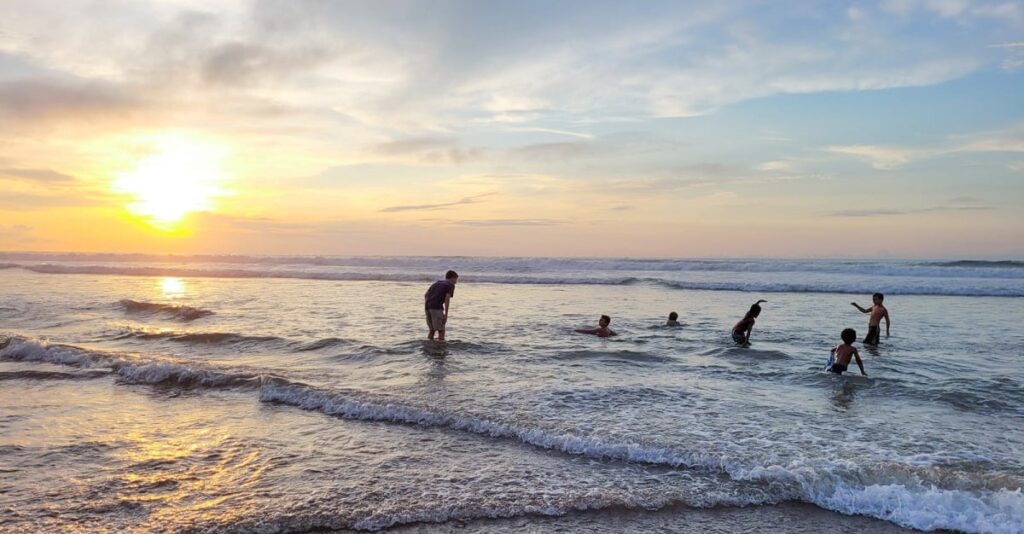
7
Naturale Reserves & WildLife
Santa Marianita turns each year from desert to green and back again, a remarkable process. But even more remarkable, is that no more than 10 km south lays the natural reserve of Pacoche, where the tropical forest flourishes all year round. Giant trees, bamboos, monkeys and tarantulas live in this piece of microclimate. The reserve has a short guided hike, and is reachable by public transport.
Environmentalists from the reserve of Pacoche also patrol the beaches from Santa Marianita till San Lorenzo, though for a different reason. Giant sea turtle moms migrate after tens of years back to their birthplace to come to lay their eggs.
One to three months later, hundreds of baby sea turtles hustle their way out and crossing the beach towards the sea. A wonder you might get lucky to witness in the early mornings. Be careful to not touch the babies though, as they might lose their sense of direction if you try helping them by bringing them to the sea.
Getting close with the adult sea turtles is possible at isla de la plata (‘the poor man’s galapagos’). You get there from Santa Marianita in a day trip, taking a bus in the early morning to Puerto Lopez, where boats leave towards the island. Also about an hour from Santa Marianita lays the national park of Machalilla, with its wonderfully perfect beaches ‘los frailes’ and ‘playa tortuga’ and amazing views definitely worth a day trip.
Want to know more about nature and wildlife around?
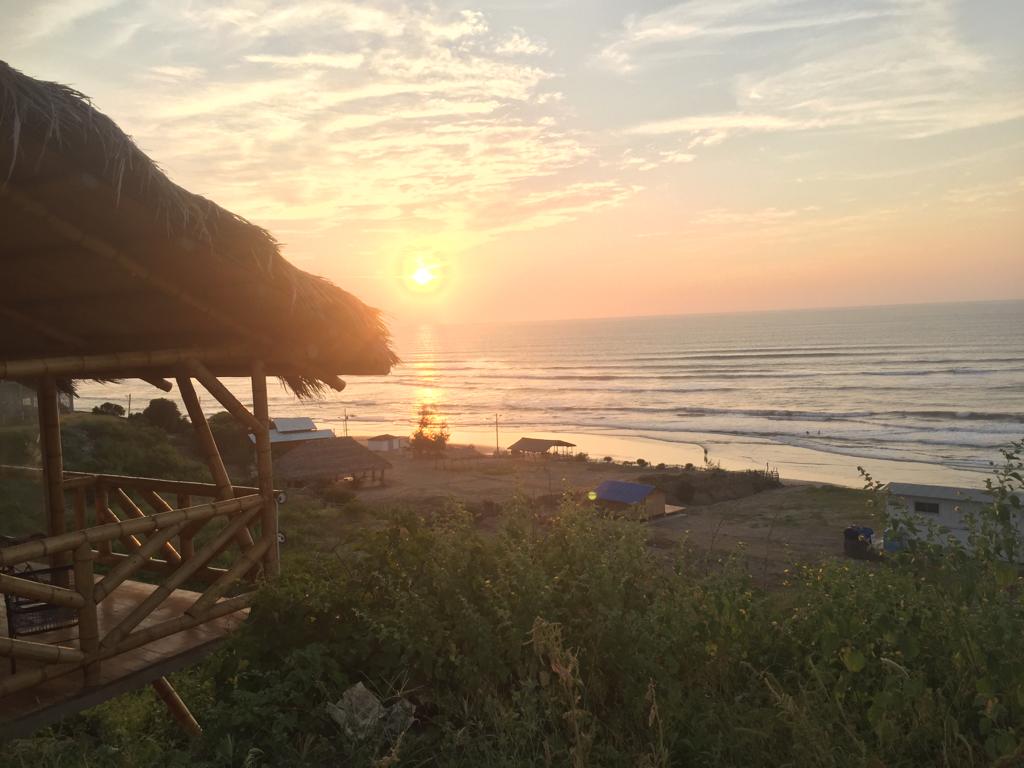
8
Beachtennis and Ecuavolley
Santa Marianita turns each year from desert to green and back again, a remarkable process. But even more remarkable, is that no more than 10 km south lays the natural reserve of Pacoche, where the tropical forest flourishes all year round. Giant trees, bamboos, monkeys and tarantulas live in this piece of microclimate. The reserve has a short guided hike, and is reachable by public transport.
Environmentalists from the reserve of Pacoche also patrol the beaches from Santa Marianita till San Lorenzo, though for a different reason. Giant sea turtle moms migrate after tens of years back to their birthplace to come to lay their eggs.
One to three months later, hundreds of baby sea turtles hustle their way out and crossing the beach towards the sea. A wonder you might get lucky to witness in the early mornings. Be careful to not touch the babies though, as they might lose their sense of direction if you try helping them by bringing them to the sea.
Getting close with the adult sea turtles is possible at isla de la plata (‘the poor man’s galapagos’). You get there from Santa Marianita in a day trip, taking a bus in the early morning to Puerto Lopez, where boats leave towards the island. Also about an hour from Santa Marianita lays the national park of Machalilla, with its wonderfully perfect beaches ‘los frailes’ and ‘playa tortuga’ and amazing views definitely worth a day trip.
Want to know more about nature and wildlife around?
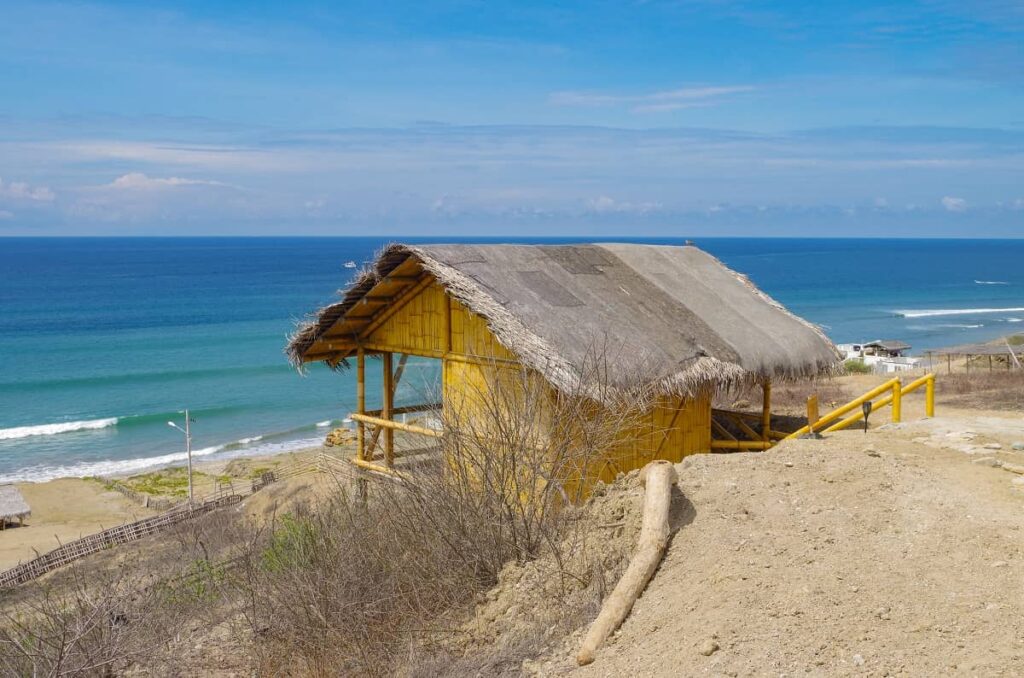
9
Ecuadorian history and artesanal sombrero's
The villages around Santa Marianita (especially ‘las piñas’) have hidden qualities as well. Inside their small houses, the women of fishermen are secretly gifted artesanias.
They spend months and months waving dried paja leaves into a sombrero, that will eventually get sold for 1000’s of dollars in the US as being the famous ‘Panama hat’.
You can learn more about these pieces of patience and nature in ‘Las Piñas’, a village a bit south where lots of ‘tejedores’ live; in Montecristi, a town to the east specialized in finalizing and artesanal shops to sell the hats; and from the mom at Punta La Barca, a tejedora who will show anyone interested how it’s done with lots of love and patience.
But there’s more cultural stories around then its hats. On the hill of Montechristi lays ‘ciudad Alfaro’, a museum – mausoleum – artesanal centre – train expo that comes with a free guide, showing you around Ecuadorian history. In the streets below are lots of little shops with all sorts of beautiful fabrics, affordable handicrafts, cloths, hammocks and muebles

10
Practical stuff: good internet, frequent cheap public transport, Manta city nearby
Last but not least.. A place can be heaven, but to live there as a nomad at some point we’ll need some contact with the outer world -and we all know that’s less self-evident sometimes then it sounds :).
Santa Marianita is lucky though, to have the international port of Manta at only 20min drive to find what you need.
There is frequent public transport to Manta ($1,25), buses to whole Ecuador go from the terminal, and it even has a (national) airport.
Finally, Santa Marianita is gifted with a very decent internet signal. Nomads living in Punta La Barca have named from “by far the best internet on my south american travels” to “incredibly stable and few dropouts”.
Stable speeds of about 12 Mbsp are thanks to the fiber optics installed in 2017 till the fishing village.
During an occasional electrical drop-out, a solar-powered back-up router is available at Punta la Barca. Data on mobile phones give also astonishingly good internet thanks to the antennas on the hill at 50m of Punta La Barca.


